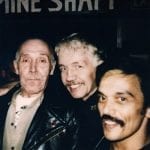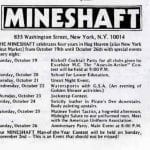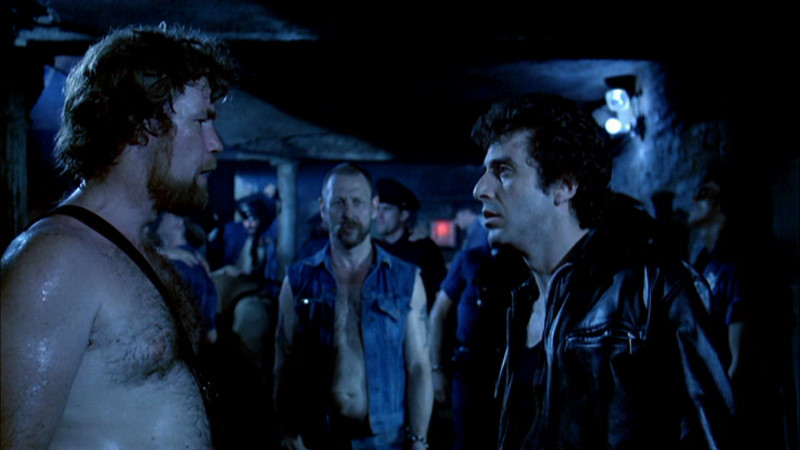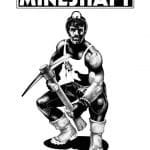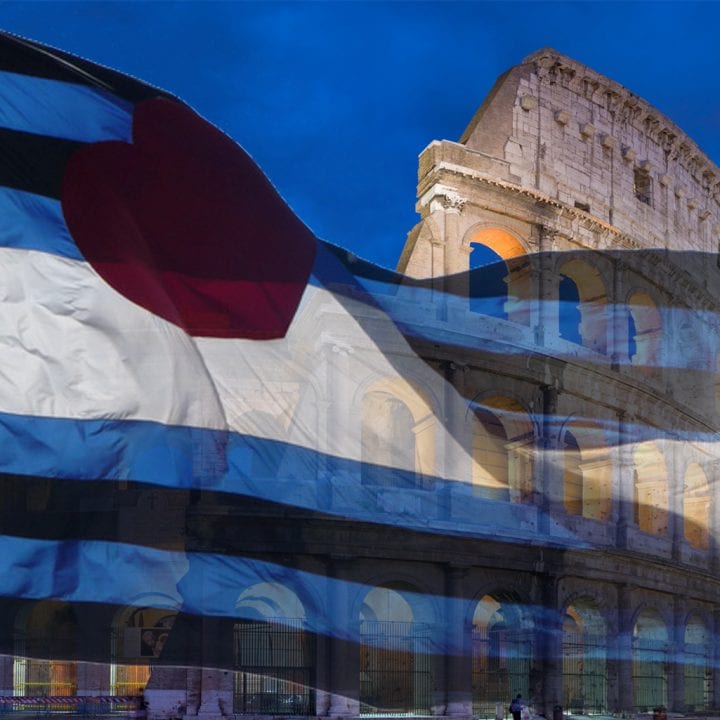Mineshaft, the most legendary and ‘infamous’ crusing bar
Mineshaft, the legend
The beautiful documentary "Mapplethorpe: Look at the Pictures" , by Bailey and Barbato, is actually screened in a limited number of cinemas.
The film, through the voices of lovers, family, celebrities, and models tells the story of one of the most original photographers of the 19th Century, which became famous for a series of sexually explicit photographs of the gay leather and SM scene.
If you saw the movie, you may have noticed that it stress how the artist was a frequent visitor of the Mineshaft in New York, an (in)famous gay cruising bar.
Here Mapplethorpe also found the inspiration for many of his works.
The Mineshaft is, furthermore, the main set of Cruising with Al Pacino, probably the most mainstream among the movies about the gay leather scene.
So, it's consequential to investigate deeply about this cruising bar and its popularity: why, after decades from its closure, its legend continues to be widespread in the gay leather and fetish community?.
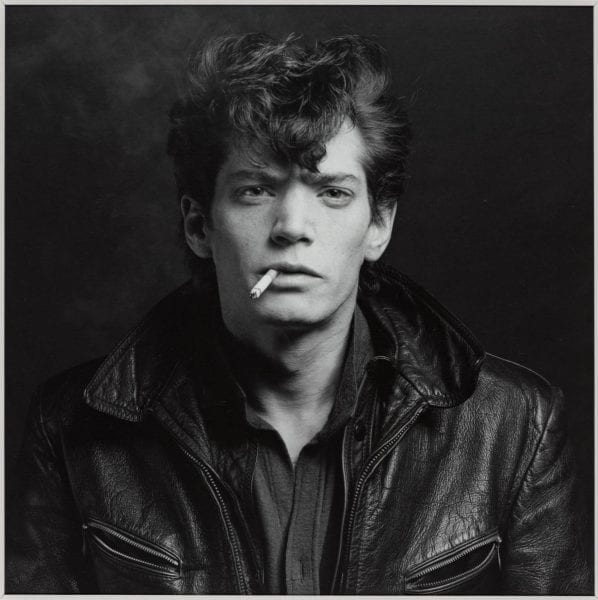
Robert Mapplethorpe (Self Portrait, 1980)
Mineshaft - The history
The Mineshaft opend as private cluab on come club October 8th, 1976.
It was in Washington Street 835, in Manhattan's Greenwich Village.
Many gay bars, also leather and fetish, were in this area of New York, called Meatpacking District.
Among them the most well-know was probably the Ramrod and the most hard was (as you can guess from the name) the The Toilet . Both of them can be found in the movie Cruising, at numbers 394 and 400 West 14TH Street.
The Mineshaft was also attended by many celebrities like the filmmakers Vincente Minnelli ("An American in Paris"), Rainer Werner Fassbinder ("Querelle"), Rock Hudson ("Giant"), the artists Tom of Finland and Keith Haring, the above mentioned photographer Mapplethorpe, and more.
Over the weekend only a few people came before 2am: the local became "full" around 5 am. During the week, however, people arrived early and went away quite early too.
The men who frequented the Mineshaft were hyper-masculine in the body, in the type of sex, and in the dresscode. Usually, the customers wore leather, cowboy clothing, motorcycle wear, workers gear or uniforms like those of the police.
Transvestites or transsexuals were not allowed.
Quicky, it became the 'temple' of “kinky sex” or simply of the non-traditional sex. The costumers could really do what they wanted without fear of being judged.
The Mineshaft was closed by the Health Department of New York on November 7th, 1985 for violation of the new anti-AIDS policies (in these years the AIDS epidemic was spreading), but also because without a liquor license.
Today, where the Mineshaft was, there is a plumber company.
Yet, after more than thirty years from its closure, many gay men in New York and around the world still speak about the Mineshaft and remember it as a mythical and legendary place
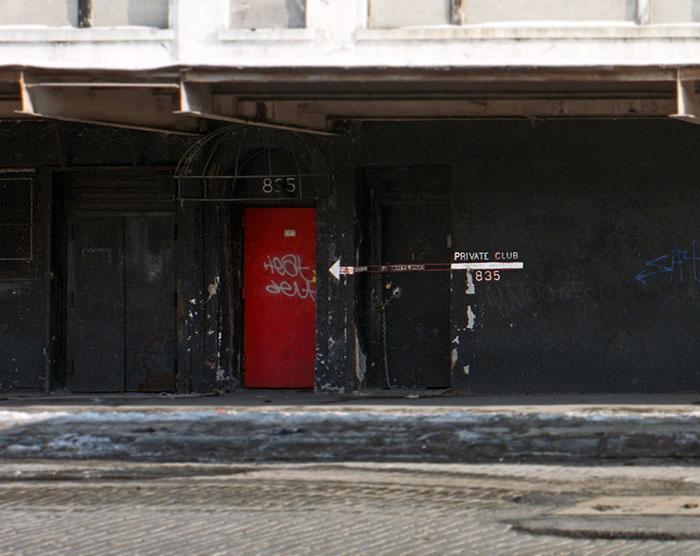
The Entrance of Mineshaft

Tom of Finland, Wally and Etienne at Mineshaft
Mineshaft, the cruising bar
The place had two floors, both without windows .
The entry on street was marked by a simple white line and by the house number. The entrance led to a totally black stair on which people waited to enter.
The doorman and the chasier stood at the top of the stairs: they applied the dresscode, checked the identity papers of guests and collected the admission fees (reduced for the members).
The non-members visitors were issued with a temporary pass with impressed the 'house rules'.
A strict selection was made at the entrance: the dresscode rule were explained in a poster near the main door:
The Mine Shaft dress code as adopted by the club on October 1, 1976 is to be followed during the year 1978. The Board of Directors Approved dress includes the following: Cycle leather & Western gear, levis, jocks, action-ready wear, uniforms, T-shirts, plaid shirts, just plain shirts, Club overlays, patches, & sweat.
NO COLOGNES or PERFUMES - NO SUITS, TIES, DRESS PANTS - NO RUGBY SHIRTS, DESIGNER SWEATERS, or TUXEDOS - NO DISCO DRAG or DRESSES also NO HEAVY OUTTER WEAR IS TO BE WORN IN PLAYGROUND
Immediately after the entrance there was a bright red toilet with urinals , wc and sinks through which the water fell directly on the floor.
The first room was the so-called "front room": a large hall with some pool tables and a long bar (the most lit area of the room), a wardrobe and some benches in the darker area.
The walls were made with not painted wood tables and sawdust was on the floor (as well as throughout the whole venue).
The bar area was the only one where you could speak loudly and "look around" (if you had just arrived) or relax after exiting from the upper floor.
Even in the bar, however, there was some action, especially over the pool tables: "simple" sexual activity between two or more men or BDSM scenes and/or exhibitionism.
The bathroom was obviously the perfect place for the watersports . There was also a pipe system useful for golden shower and (only for a few years after the opening) an area for shit - play.
A very dark tunnel led downstair to the lower floor, the so-called playground . Here the temperature was really higher (this is why the poster at the entrance said that you could not get down with heavy clothing) and you could not talk or laugh.
In this area, much more dark than the front-room, there were a small bar, a table and two small rooms with slings used for fisting (Crisco and paper towels were provided directly from the bartender!).
This plan also had some small wooden rooms with dual use: they could be used to play in private with someone, or for practicing pseudo-anonymous activities of fellatio using the glory holes between the walls of the rooms.
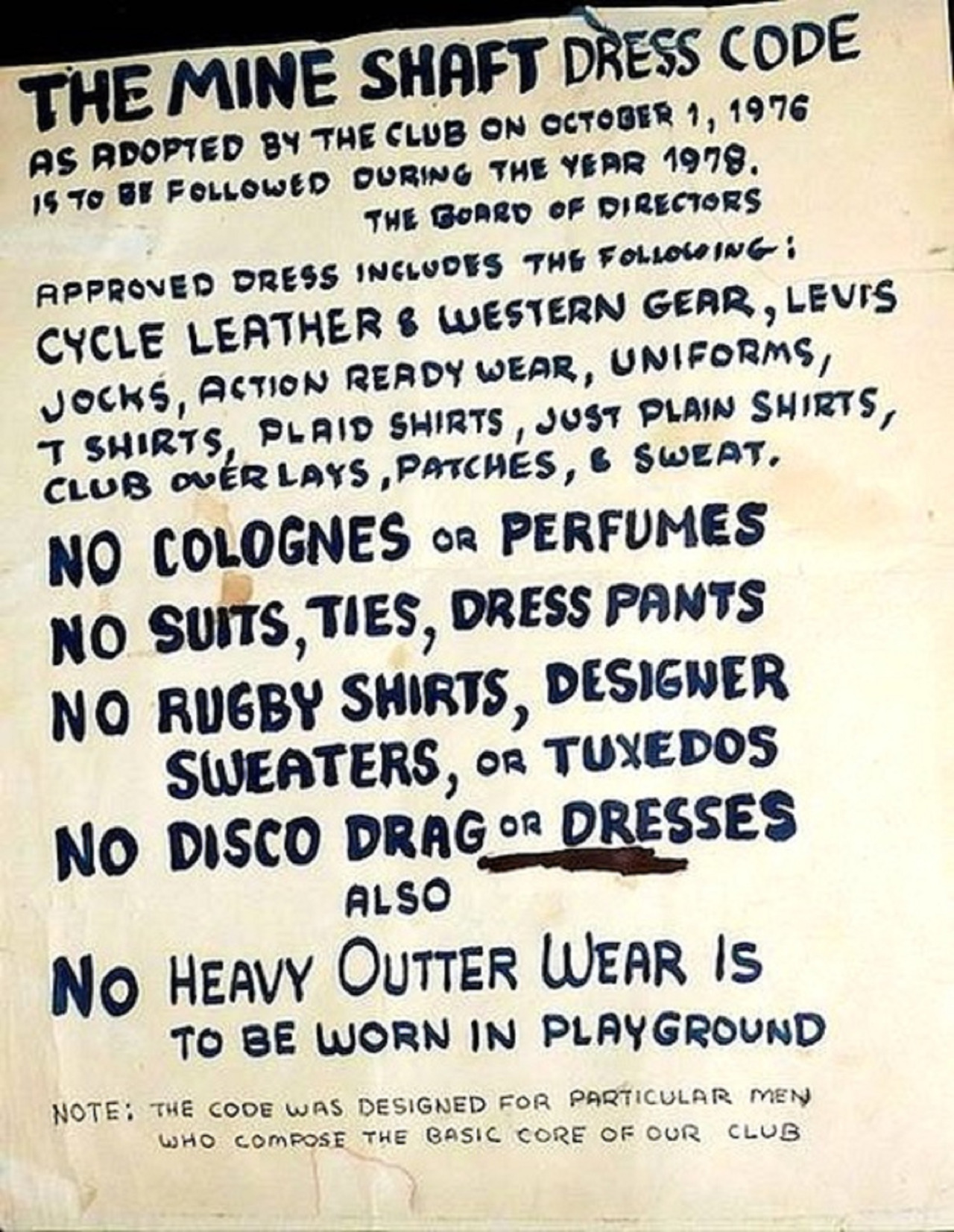
The famous poster with the Mineshaft dresscode
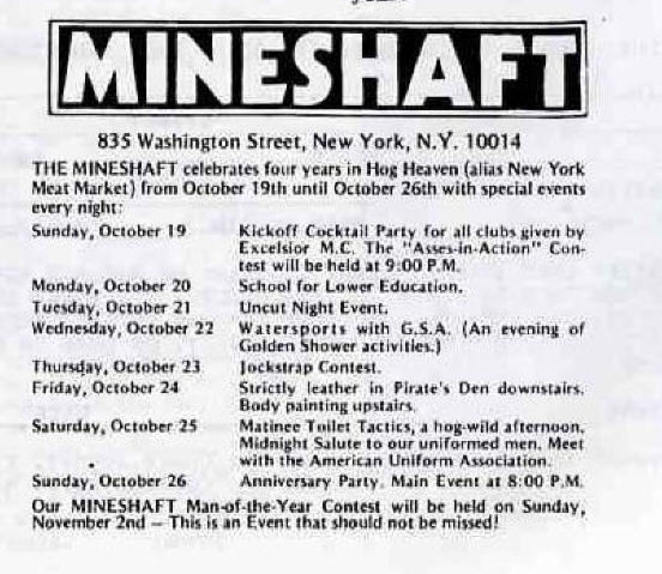
Mineshaft - Programme of the 4th birthday celebration
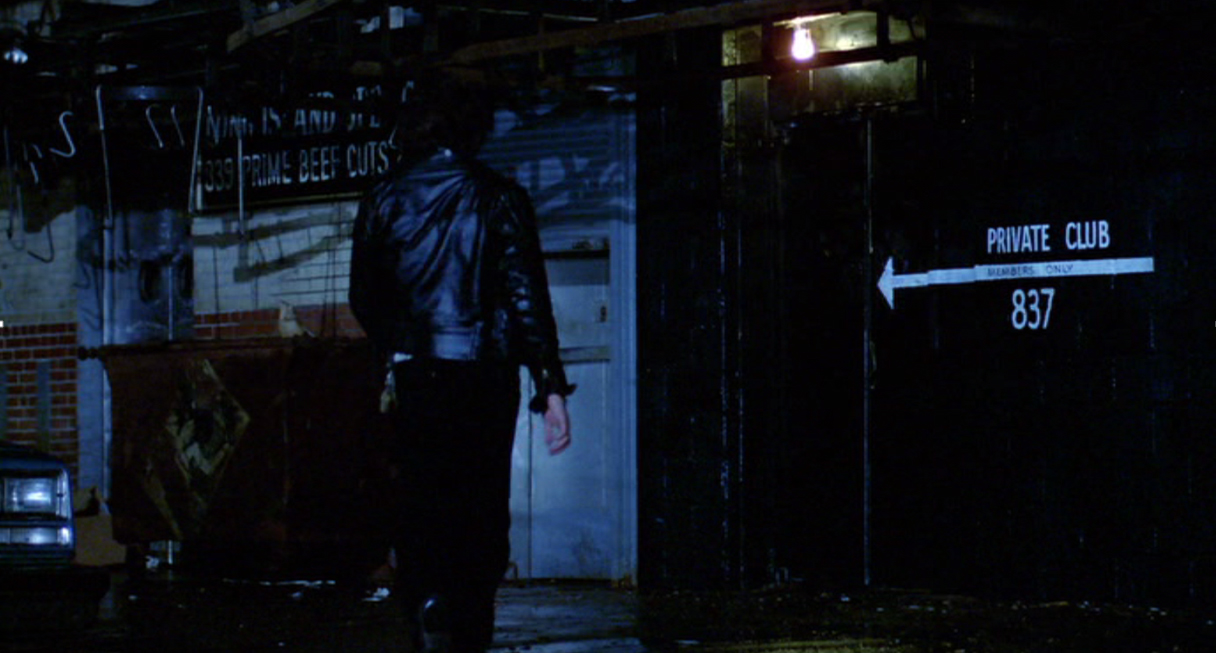
Cruising's frame where with the Mineshaft's entrance and the civic number changed in 837
Mineshaft, fun facts
- Near the wardrobe there was a sign which offered a discount of 5 cents to those who were not circumcised and that "could prove it."
- Who was not usual with the venue, was often frightened by the presence of many police officers ... and sometimes ran away thinking there was a raid in progress! But... there were just customers with the uniform of the local police.
- Freddie Mercury wore a T-shirt with the Mineshaft logo in the official video for the Queen's song "Don't Stop Me Now".
- The Village People were inspired by the dress code of the Mineshaft for their "costumes"
- Celebrities such as Mick Jagger and Rudolf Nureyev, were "blocked" and not allowed to enter because they did not respected the dresscode
- On the membership cards of the Mineshaft was printed (for privacy) the "nickname" of the member, but not his name
- In the movie Cruising, with Al Pacino the venue is rebuilt in a theatre and its house number is changed (837 instead of 835)
Mineshaft, Gallery
- The Entrance of Mineshaft
- Policemen guard the entrance of the Mineshaft after its closure
- Tom of Finland, Wally and Etienne at Mineshaft
- Mineshaft – Programme of the 4th birthday celebration
- Cruising’s frame where with the Mineshaft’s entrance and the civic number changed in 837
- The Mineshaft as seen in Crusiing movie
- Mineshaft poster by REX
- Mineshaft Calendar (1983)
- The premises of Mineshaft today (2014, Google Street view)



